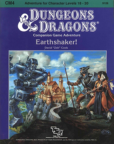So, I started out with the notion of making a 5th edition Scifi game. This was spurred by the idea of exploring what you can do with the 5th edition system framework. All fun and games, until you realize how much work it can be. Oh well, we continue the madness.
The problems with setting
The question of game design is one of experience. What stories are the players going to have here? What experiences do you want them to have? The original role-playing games, proto-D&D and its ilk, were extensions of war games. They were changed because the players wanted a different experience from what they were finding in the wargames. The rules grew out of that desire for a new experience.
D&D has its base experiences baked into the rules. The players are expected to mostly play heroes, or at the very least, anti-heroes. They will exist in a generic western fantasy world. Melee combat is primary, magic exists, and Tolkienian fantasy races (with some minor variation) will be found throughout the world. Change those assumptions, and you add new rules to reflect the changes. 5th edition Dark Sun will have different race rules, backgrounds, and character variations because the world is different. (note: You should totally go see my buddy Greg’s write up of Dark Sun for 5th edition)
This is a bit of what impressed me with the Adventures in Middle Earth 5th edition rules. The experience in Middle Earth should be different from the experience in D&D. They altered the rules to help create that different experience.
A scifi, space opera experience is, likewise, a very different experience than from D&D. I tried to reflect those changes in my rough outline of the classes. I will need to do something similar with the races, but there is a bit of prep work to do first.
Space opera can have a wide range to the things in the setting. I need to make decisions about how the setting works to make the choices in the races make sense. To demonstrate the range of options, consider three different space opera like settings.
Mass Effect
Mass Effect is a sprawling setting. The tech allows gravity manipulation, to some extent. It has faster than light travel, instantaneous travel between points, in some instances. There are advanced AI with their own sentience, multiple alien races, cybernetic or genetic manipulation, faster than light communication, energy weapons, biotic (ie psionic) powers, and civilizations that span the galaxy. If you were building the game with Mass Effect setting, the classes would have been slightly different, and you would have a half dozen races built like races in D&D.
Kill Joys or Dark Matter
The setting would be similar to Mass Effect in a number of ways. The tech level in Mass Effect is a little higher, but similar tech realities are there. The big difference is the lack of alien races. There are humans, some androids, and variations on humans. There are no star spanning empires of alien cultures. The classes as described in my original post could work for the most part. You might skip psionics, but otherwise, they work fine. Doing “race” with those settings becomes more about culture. Indeed, you could do a Corp Culture, a Street Culture, and a Royal Culture. Android could be a Race, but it might need some variations on class to accommodate that.
The Expanse
So, despite being more hard scifi, the Expanse does fall into space opera. The tech level is lower, with some spoilery exceptions. Read the books. There are no androids, no aliens, and no faster than light travel or communication. The guns are largely slug throwers. Gravity is from mass, spin, or thrust and nothing else. There are some elements of cybernetics, especially in the later books, though the show has already had a cyborg in the first season. The Classes in my first post would work, but there would be no psionics. Transhumans would be rare. Race takes on a different context here. Earth humans have lots of advantages over everyone else. We evolved on earth so living here is good for our health. Belters would have large disadvantages and not a lot of advantages. The one advantage would be in Zero G, because belters are more acclimated to it than humans. You could give them advantages in any kind of space-based survival. Martians are less badly disadvantaged than Belters, but are not as strong as Earthers in a lot of ways. The conflict between these three groups is at the heart of the setting, so doing Race correctly would be important.
With those three examples, you can see the range you go with experiences in space settings. I think I will need to make some choices now, to make all the game design decisions make more sense. I need a synopsis of my setting definitions.
Stellar Frontiers?
Wanderer?
Space the Final…hmmm.
Insert good Science fiction game name here.
Tech
Travel is going to be limited to lightspeed, but there will be points in systems where wormholes can be formed. There is only 1 or 2 such points in any system depending on how the solar system is arranged. Wormhole travel is virtually instant. The non-lightspeed travel is restricted to reaction drives, but the engines are powerful enough to reach an appreciable percentage of the speed of light(1%) pretty quickly. Artificial gravity exists, but is not fully understood how it works.
Weapons tech is a combo of slug throwers and some beam weapons. Slug throwers are premier killing implements, even in the future, but beam weapons have some specific uses. Armor tech is primo, with power armor being the top of the range. This is not quite up to Iron Man tech, but it does involve enhancements galore. Might do them like magic items? I am not sure.
Bioware and cybernetics are common…ish. They exist and are expensive. The average joe or jane on most worlds will have neither and might get some version if they have a major injury. Steve lost his hand in horrible moisture farm accident, but he does alright with the new metal one. The actual upgrades are reserved for the rich and dangerous. Special forces, engineered assassins, and the like can get access to the seriously sweet upgrades. Most people are largely bothered by the loss of humanity involved.
Computer technology has led to AI, and various forms of androids being ubiquitous. Artificial intelligence is mostly a dumb version. It is smart in the way it collates data and is very useful for things involving data processing. Piloting larger ships often requires one. It is dumb in that there are no self-aware AI, for the most part. There may be a rare one, but humanity learned its lesson from its own fiction. No Skynet is space. Robots are utility, though a multipurpose one can often be found in most homes for taking care of things around the home.
Culture and Races
Humanity is the dominant culture in their quarter of the galaxy. They were not the first race to become an interstellar culture, but there are currently the largest in the galaxy. The previous holder of the title left or died out 1000 years earlier for unknown reasons. Human culture is not just one culture, though. They are spread across 500 inhabited systems. Attempts to form a central government that spans the breadth of humanity always fail. Luckily, interstellar warfare is also hard. In system conflicts happen from time to time, and a few interstellar wars have happened, but it is just hard to maintain an interstellar war, given the travel methods. If there are only a couple of wormhole spots in a system, it becomes easy to guard against attack.
Corporate conflicts are more common. Large trade federations try and exclude different trade groups from certain sections of space. Mining rights in certain systems are the cause for a lot of conflict and sabotage. Different star system governments will form trade deals with one group and embargo the other’s goods. Not all systems are like that, but several them are.
The Terran Compact is a collection of 5 star systems, including the home of humanity, Earth. At 5 systems, it is one of the largest single government areas in all humanity. The government is a parliamentary monarchy. The royal family has ruled for centuries. Their forbearers came to power as tyrannical despots, but the centuries have passed, and the current royal family is benevolent stewards of the Compact.
Earth is now a glittering park of a world. The environmental damage was terraformed away and it is mainly a playground for the rich and scholarly.
Mars, on the other hand, has become a world city. Powerful bioengineered atmosphere production facilities have made it the planet’s air breathable, and powerful magnetic fields protect that from the solar winds.
The Slitreen Council is the only other major player outside humanity. They are a military power, and value strength overall. Their production capabilities are less than humanity’s, or they might have been a problem. The Siltreen are nicknamed “dragons” by the human worlds. They are a bipedal reptilian species with large, crested heads. They average a foot or taller than humans and are more physically powerful than unaltered humans. Despite their advantage, 100 years ago, they tried to invade a human world and failed miserably.
Siltreen control 4 inhabited systems. One of those systems did have an indigenous intelligent species, called Ridren. The Siltreen all but exterminated the Ridren. Some few members of the species are found as refugees in Human space, and as pets in Slitreen zoos. Ridren are a small primate race, with some affinity for working on machinery. The Ridren have no unifying government in exile. Only a few thousand of them still exist.
The last major Race/culture are the Uplifts. Humanity has been working in genetics for nearly 1000 years. Along the way, certain modifications were made in other terran species. Ethical or not, a wide range of variations were artificially generated. Two of the more enduring is the Dog and Cat uplifts. The term Uplifts is what they are called and originally, they were intended as companions and servants on colony worlds during human expansion. Over time, the practice was seen as unethical and abolished. The question of what to do with the remaining Uplifts wasmade more complicated by a group of renegade scientists. They set about altering uplifts to allow them to breed true. 300 years later and they are a people on to themselves. There is even a colony world completely occupied, run and protected by Uplifts. The world is called Wilder. Despite their history, Uplifts generally get along with humans and can be found throughout human space.
I think I will leave it there. That is a lot to work with. Honestly, that went on longer than intended. Next post will be about the actual mechanics now that I have a picture of the setting in mind.



One thought on “Science Fiction Game in 5th edition part 2 The Problems of Setting”
Comments are closed.